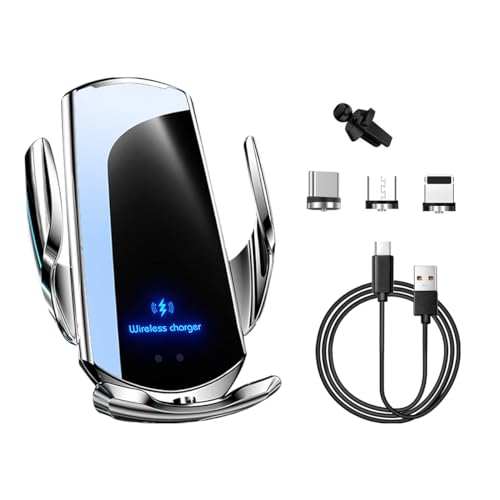You are using an out of date browser. It may not display this or other websites correctly.
You should upgrade or use an alternative browser.
You should upgrade or use an alternative browser.
THC_d0013 Coolant heater problem detected
- Thread starter dogger23
- Start date

Help Support Toyota Rav4 EV Forum:
This site may earn a commission from merchant affiliate
links, including eBay, Amazon, and others.
dogger23
Active member
I searched up the error one of the results here mentioned low 12 v battery voltage, but mine shows 14V.
Take a look
Note.
DC-DC converter assembly enclosure and supplies high voltage from the electric vehicle battery assembly to the
compressor assembly with bracket, battery coolant heater (uses 20A fuse, the bottom one in this photo*) and No.1 heater with bracket sub-assembly.
The DC-DC converter assembly controls the power source to the battery coolant heater using a signal from the thermal control ECU.
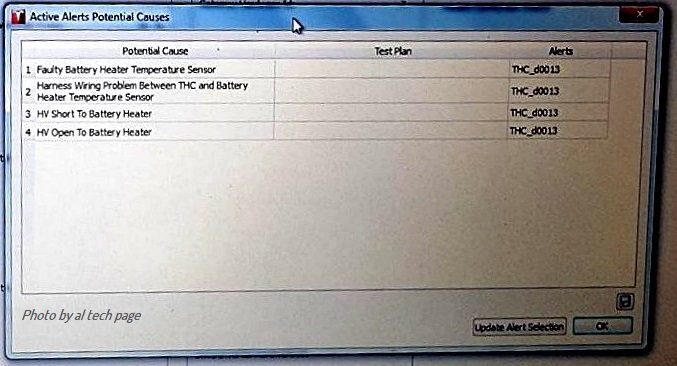
*
https://alflash.com.ua/2019/to_rav4ev/fuses.jpg
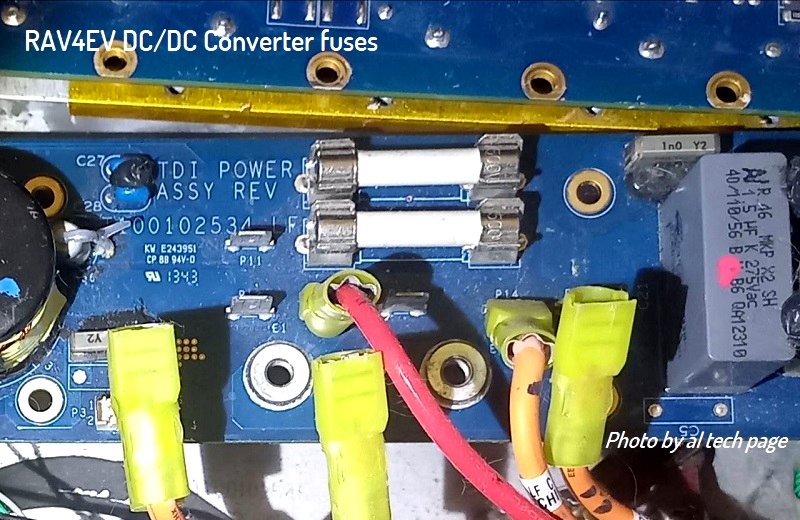
Note.
DC-DC converter assembly enclosure and supplies high voltage from the electric vehicle battery assembly to the
compressor assembly with bracket, battery coolant heater (uses 20A fuse, the bottom one in this photo*) and No.1 heater with bracket sub-assembly.
The DC-DC converter assembly controls the power source to the battery coolant heater using a signal from the thermal control ECU.
https://alflash.com.ua/2019/to_rav4ev/d0013.jpgI searched up the error one of the results here mentioned low 12 v battery voltage, but mine shows 14V.

*
https://alflash.com.ua/2019/to_rav4ev/fuses.jpg

Last edited:
[Remove the HV Service Disconnect from under the passenger seat before doing anything below.]
Hmmm. I don't have any experience with this system. Several Tesla Model S folks who have experienced THC_d0013 have replaced their battery heaters and not solved this issue. The battery heater is one of the early HV subsystems that is not included in the HVIL* -- a safety feature -- so be very careful if you unplug it. It's supplied HV power from the DC-DC Converter, and its plug is readily accessible there, right up top. You can test the heater for correct internal resistance ranges.

From the Service Manual, section Engine-Hybrid System, Cooling, HV_Battery Coolant Heater

That will give you a rough idea if the heater's close to being functional, but it doesn't test for HV isolation, and THC_d0013 covers a lot of different scenarios. But I wouldn't be surprised if it passes that crude test.
I think I'd check the heater against that chart of values first, then probe the output of the DC-DC Converter for an open fuse. That requires knowing a baseline resistance value of that circuit inside the DC-DC -- which I don't have ATM -- and definitely remove the HV Service Disconnect from under the passenger seat, because the system can activate the DC-DC at any time. Never probe any DC-DC HV connections unless the Service Disconnect has been removed.
If you want a baseline fuse check resistance, maybe Vlad has it (or it's somewhere in the Service Manual, and I just haven't found it). If not, I can get it from one of my RAV4 EVs in a day or two.
From what I see, aside from damaged wiring, the heater itself can cause that DTC, a failed fuse inside the DC-DC, or the DC-DC itself. That's on the HV side of things.
On the LV/sensor side . . .

. . . there are other things to check out. I lack the time right now to look into this deeper . . .
* = This is not strictly true: the mating plug on the battery heater harness does have an HVIL loopback, so unplugging it ought to open the HVIL and prevent HV contactor closure. What I meant is that the HVIL does not extend all the way to the individual components: battery heater, AC compressor, and cabin heater. But their harness KET connectors at the DC-DC do include HVIL loopbacks . If you're interested in learning more about this, see the excellent Tesla Service Bulletin SB-10052460-6095 / TN-13-44-001 "Tech Note: Troubleshooting Isolation Faults".
Hmmm. I don't have any experience with this system. Several Tesla Model S folks who have experienced THC_d0013 have replaced their battery heaters and not solved this issue. The battery heater is one of the early HV subsystems that is not included in the HVIL* -- a safety feature -- so be very careful if you unplug it. It's supplied HV power from the DC-DC Converter, and its plug is readily accessible there, right up top. You can test the heater for correct internal resistance ranges.

From the Service Manual, section Engine-Hybrid System, Cooling, HV_Battery Coolant Heater

That will give you a rough idea if the heater's close to being functional, but it doesn't test for HV isolation, and THC_d0013 covers a lot of different scenarios. But I wouldn't be surprised if it passes that crude test.
I think I'd check the heater against that chart of values first, then probe the output of the DC-DC Converter for an open fuse. That requires knowing a baseline resistance value of that circuit inside the DC-DC -- which I don't have ATM -- and definitely remove the HV Service Disconnect from under the passenger seat, because the system can activate the DC-DC at any time. Never probe any DC-DC HV connections unless the Service Disconnect has been removed.
If you want a baseline fuse check resistance, maybe Vlad has it (or it's somewhere in the Service Manual, and I just haven't found it). If not, I can get it from one of my RAV4 EVs in a day or two.
From what I see, aside from damaged wiring, the heater itself can cause that DTC, a failed fuse inside the DC-DC, or the DC-DC itself. That's on the HV side of things.
On the LV/sensor side . . .

. . . there are other things to check out. I lack the time right now to look into this deeper . . .
* = This is not strictly true: the mating plug on the battery heater harness does have an HVIL loopback, so unplugging it ought to open the HVIL and prevent HV contactor closure. What I meant is that the HVIL does not extend all the way to the individual components: battery heater, AC compressor, and cabin heater. But their harness KET connectors at the DC-DC do include HVIL loopbacks . If you're interested in learning more about this, see the excellent Tesla Service Bulletin SB-10052460-6095 / TN-13-44-001 "Tech Note: Troubleshooting Isolation Faults".
Last edited:
Checking resistance of DC-DC Converter Battery heater output with different polarity of DVOM connection.... If you want a baseline fuse check resistance, maybe Vlad has it...
https://alflash.com.ua/2019/to_rav4ev/bat_heat.jpg
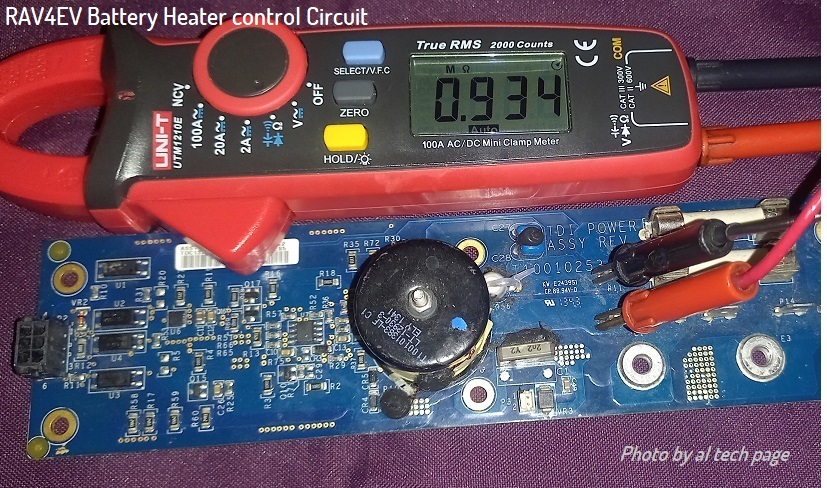
https://alflash.com.ua/2019/to_rav4ev/bat_heat1.jpg
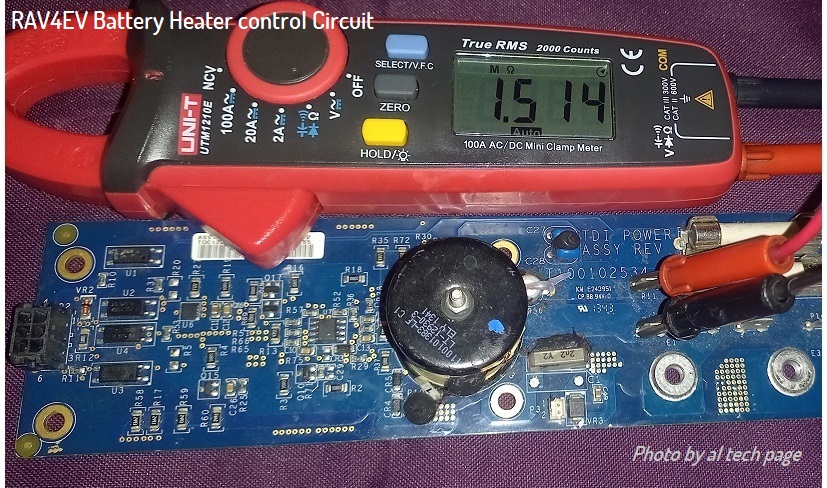
https://alflash.com.ua/2019/to_rav4ev/bat_heat2.jpg
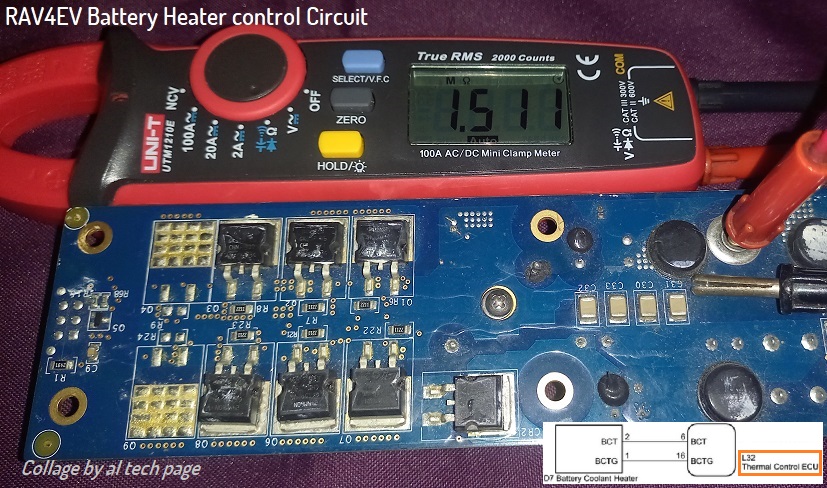
Excuse me, but as I know this table shows the dependence of Battery Heater temperature sensor resistance...... From the Service Manual, section Engine-Hybrid System, Cooling, HV_Battery Coolant Heater
View attachment 805...
https://alflash.com.ua/2019/to_rav4ev/heat_thermist.png

The results of the heating element resistance test will be interesting.
As I remember, its resistance is several tens of Ohms.
Update.
https://alflash.com.ua/2019/to_rav4ev/hvil_pins2.jpg
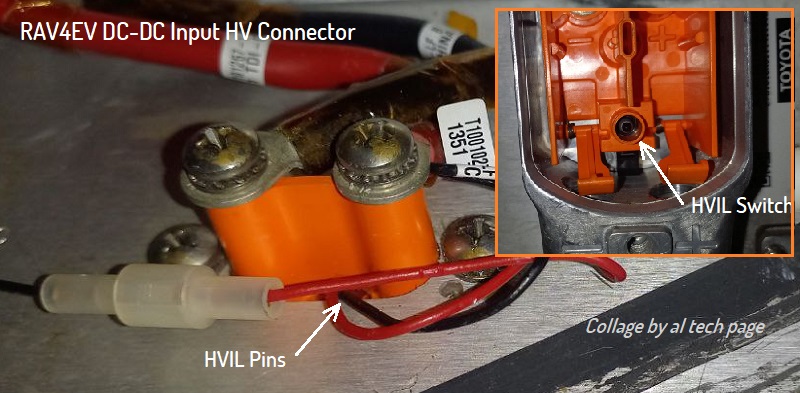

Last edited:
dogger23
Active member
Take a look
Note.
DC-DC converter assembly enclosure and supplies high voltage from the electric vehicle battery assembly to the
compressor assembly with bracket, battery coolant heater (uses 20A fuse, the bottom one in this photo*) and No.1 heater with bracket sub-assembly.
The DC-DC converter assembly controls the power source to the battery coolant heater using a signal from the thermal control ECU.
https://alflash.com.ua/2019/to_rav4ev/d0013.jpg

*
https://alflash.com.ua/2019/to_rav4ev/fuses.jpg

I look a cursory glance under the hood and didn't see the heater, it may be under plastic covers or under my jDeMO adapter. Do you have a a clue what kind of fuse that is? You mentioned 20, but I looks like a ceramic. I'll look in the manual for more info.

$16.06
$16.91
MICTUNING Upgraded Dual USB Port 6.4A QC3.0 Quick Charger with Blue LED Digital Voltmeter Replacement for Toyota, Compatible with Cellphone iPad PDA Laptop GPS (Surface Size 1.6 x 0.9 inches)
Nado Stuff (Authorized Dealer)
This heater is "well hidden". Follow the hoses and you will find it.Я бегло заглянул под капот и не увидел нагреватель, он может быть под пластиковыми крышками или под моим адаптером jDeMO. У вас есть идея, какой это предохранитель? Вы упомянули 20, но мне кажется, что он керамический. Я посмотрю в руководстве, чтобы узнать больше.
https://alflash.com.ua/2019/to_rav4ev/bat_cool4.png
Update . The specified fuse is located on the main board of the DC-DC converter https://alflash.com.ua/2019/to_rav4ev/fuses.jpg
1/2 Off Battery Heater Current
p.s. It would be useful to check the resistance of the heating element. Of course, with all safety rules.
Last edited:
dogger23
Active member
This heater is "well hidden". Follow the hoses and you will find it.
https://alflash.com.ua/2019/to_rav4ev/bat_cool4.png
Update . The specified fuse is located on the main board of the DC-DC converter https://alflash.com.ua/2019/to_rav4ev/fuses.jpg
1/2 Off Battery Heater Current
p.s. It would be useful to check the resistance of the heating element. Of course, with all safety rules.
This is very helpful, but it seems with my after market modification, the convertor was moved, which explains why I didn't see it. I'll try and make more progress on the weekend.
Sir, this is my video answer to your question about the battery heater. And about the location of the DC-DC converter, you could find out from this link, which was recommended earlier https://alflash.com.ua/2019/to_rav4ev/bat_cool4.pngI look a cursory glance under the hood and didn't see the heater, it may be under plastic covers or under my jDeMO adapter. Do you have a a clue what kind of fuse that is? You mentioned 20, but I looks like a ceramic. I'll look in the manual for more info.
Last edited:
dogger23
Active member
A drawing of the structural diagram of the cooling accumulator was shown at the Toyota training. But this is not a photo of the under hood space. They are easy to find on the site using the search.I found it in a different location.
https://www.myrav4ev.com/threads/another-dead-rav4-ev.2582/#post-30340
dogger23
Active member
This was pretty thoroughly covered in 2017, but the OP hosted his pics on an image hosting service that died; the forum software at the time didn't support attachments, as the current forum software does. So the entire thread, while worth reading, isn't as helpful as it could be.
Since this GEN1 DC-DC Converter is shared with the first 1.5 years of production of the Model S, those folks have their own forums with tips. Here's a decent disassembly video (#3 of 5 in a series he posted).
Since this GEN1 DC-DC Converter is shared with the first 1.5 years of production of the Model S, those folks have their own forums with tips. Here's a decent disassembly video (#3 of 5 in a series he posted).
dogger23
Active member
It seems to be the fuse, I'll confirm once replaced.
dogger23
Active member
For posterity, anyone with this issue, it is a 20A 500VP ceramic fuse.
dogger23
Active member
I replaced the fuse and got hit with one error. BMS_f008, any suggestions on how to proceed? I'll look into those in the mean time.
Last edited:
https://static.nhtsa.gov/odi/tsbs/2014/SB-10052449-4313.pdf
BMS_f008: that's an HVIL fault, and if it wasn't present before, I'd re-check that all the external HV connectors to the DC-DC are securely inserted. You may want to remove each and stare into the connectors to make sure a terminal didn't get folded over.
HVIL is a series loop of 60 ohm resistors, so if any one of them is damaged or not in circuit, the BMS won't allow the HV to "flow" (contactors to close). It's a good safety system.
BMS_f008: that's an HVIL fault, and if it wasn't present before, I'd re-check that all the external HV connectors to the DC-DC are securely inserted. You may want to remove each and stare into the connectors to make sure a terminal didn't get folded over.
HVIL is a series loop of 60 ohm resistors, so if any one of them is damaged or not in circuit, the BMS won't allow the HV to "flow" (contactors to close). It's a good safety system.
dogger23
Active member
I see this photo, https://alflash.com.ua/2019/to_rav4ev/hvil_pins2.jpg
Shows a HVIL switch here is mine.
Shows a HVIL switch here is mine.

Checking resistance of DC-DC Converter Battery heater output with different polarity of DVOM connection.
https://alflash.com.ua/2019/to_rav4ev/bat_heat.jpg

https://alflash.com.ua/2019/to_rav4ev/bat_heat1.jpg

https://alflash.com.ua/2019/to_rav4ev/bat_heat2.jpg

Excuse me, but as I know this table shows the dependence of Battery Heater temperature sensor resistance...
https://alflash.com.ua/2019/to_rav4ev/heat_thermist.png

The results of the heating element resistance test will be interesting.
As I remember, its resistance is several tens of Ohms.
Update.
https://alflash.com.ua/2019/to_rav4ev/hvil_pins2.jpg

View attachment 808
Yes, the translucent cover has to be installed to complete the loop. But, so does every other orange connector the connects to anything (not just the DC-DC Converter). Many of the orange connectors that plug onto the DC-DC are KET connectors and they have built-in HVIL resistors that make contact, completely aside from their function as HV connectors.
That code could be caused by literally any one of those connectors failing to complete the HVIL loop.
That code could be caused by literally any one of those connectors failing to complete the HVIL loop.
1/2 off-topic. Hope this will useful.
https://alflash.com.ua/2019/to_rav4ev/hvil_ch.jpg
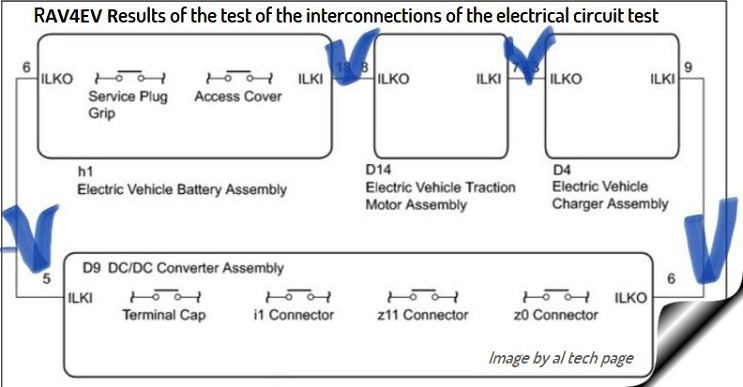
https://alflash.com.ua/2019/to_rav4ev/hvil_.jpg
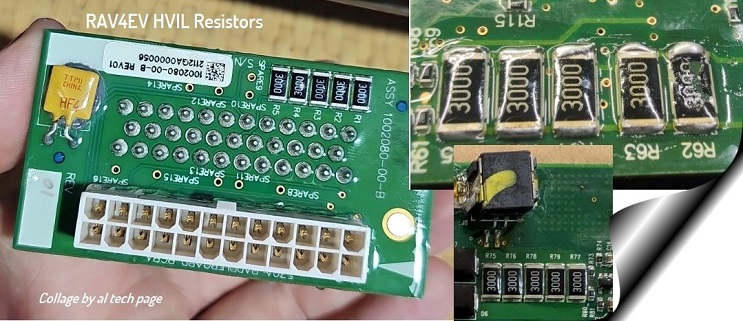
https://alflash.com.ua/2019/to_rav4ev/hvil3.jpg
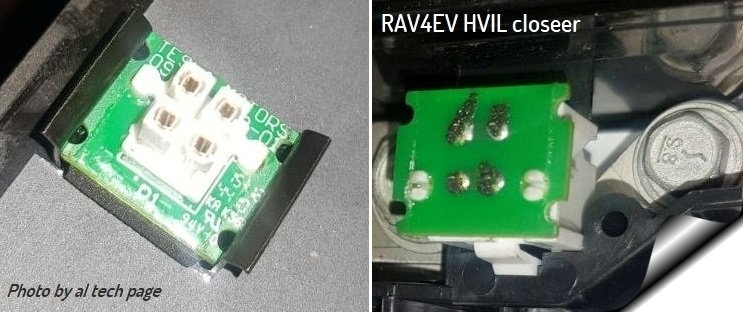
https://alflash.com.ua/2019/to_rav4ev/hvil_sim.jpg
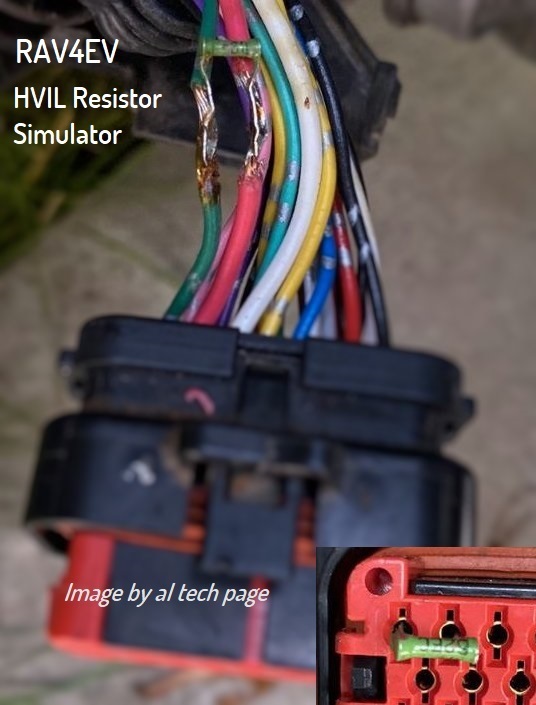
https://alflash.com.ua/2019/to_rav4ev/f008cause.png
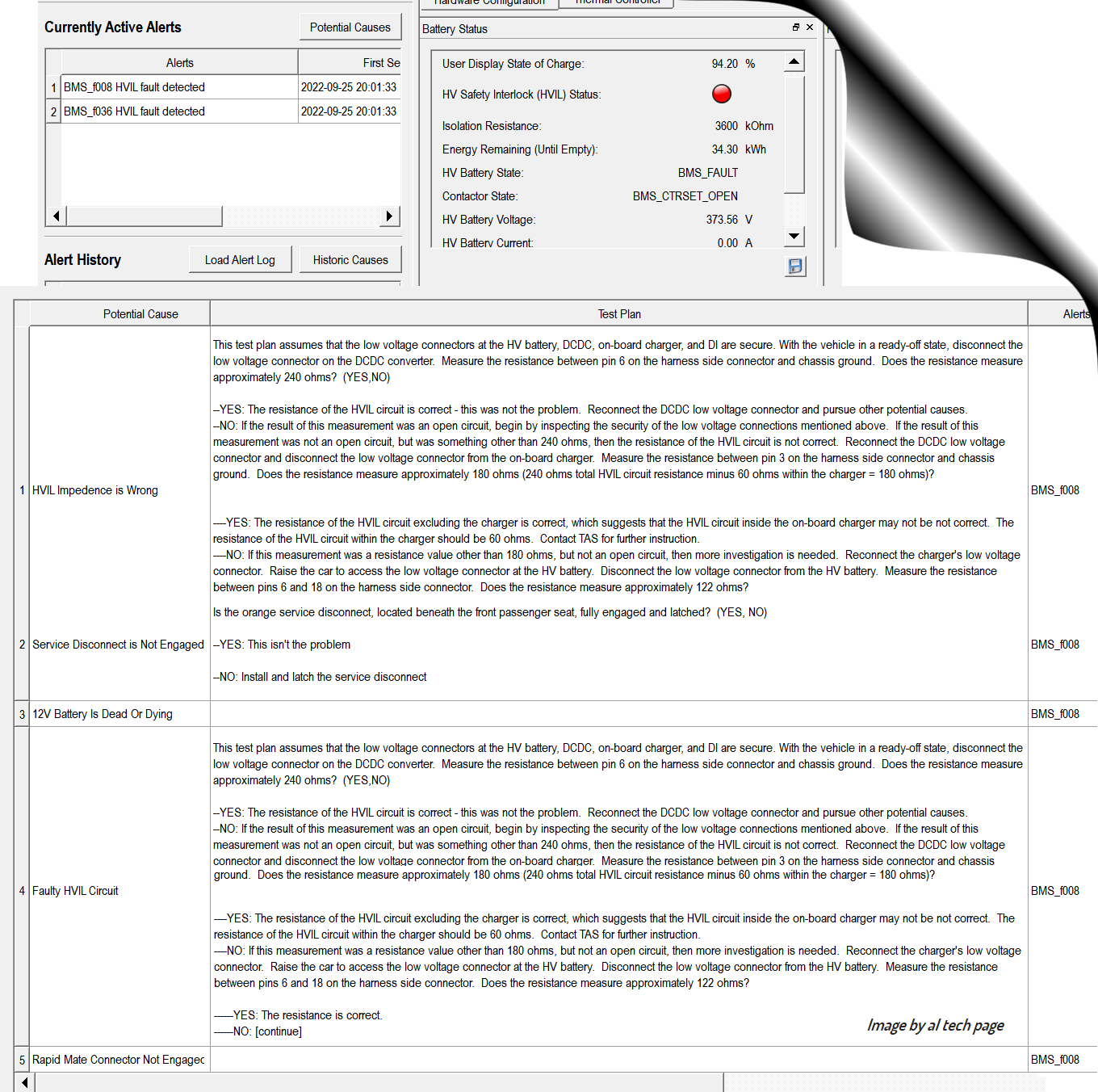
Update.
Thank you for the high quality photo of the breaker aka "Terminal Cap".
May I publicly use your photo?
https://alflash.com.ua/2019/to_rav4ev/hvil_ch.jpg

https://alflash.com.ua/2019/to_rav4ev/hvil_.jpg

https://alflash.com.ua/2019/to_rav4ev/hvil3.jpg

https://alflash.com.ua/2019/to_rav4ev/hvil_sim.jpg

https://alflash.com.ua/2019/to_rav4ev/f008cause.png

Update.
Thank you for the high quality photo of the breaker aka "Terminal Cap".
May I publicly use your photo?
Last edited:
Similar threads
- Replies
- 253
- Views
- 10K
Latest posts
-
-
-
-
READY ON not available due to charging cable connection
- Latest: patricknicolello095@gmail
-
-
















